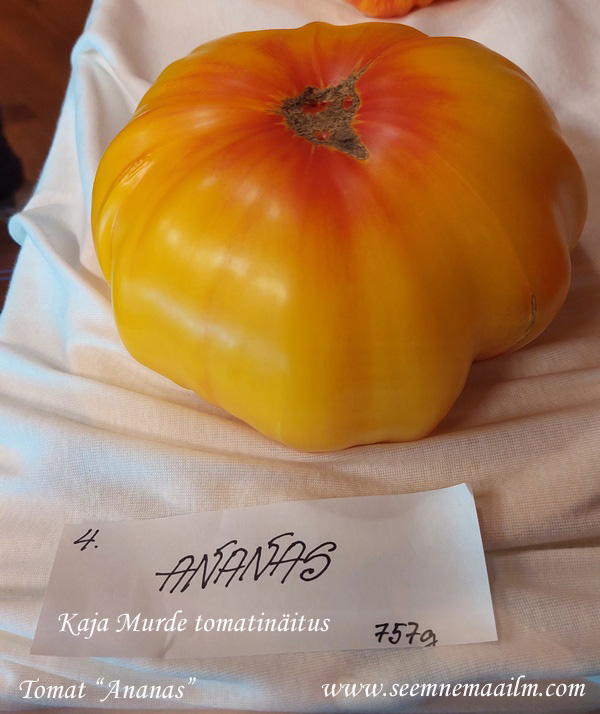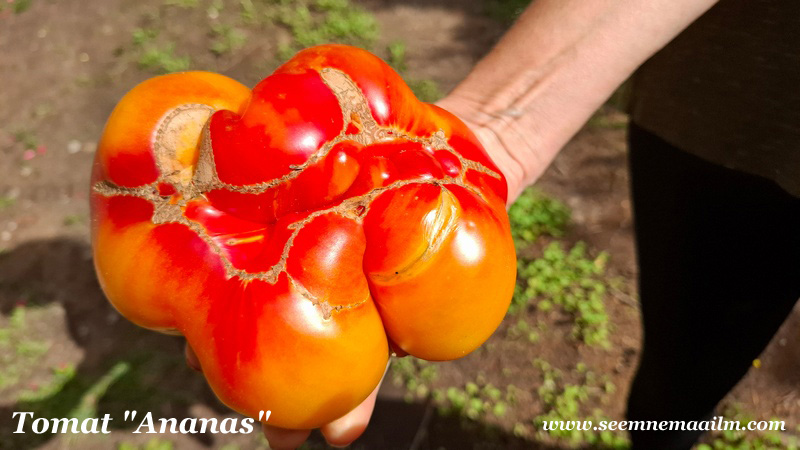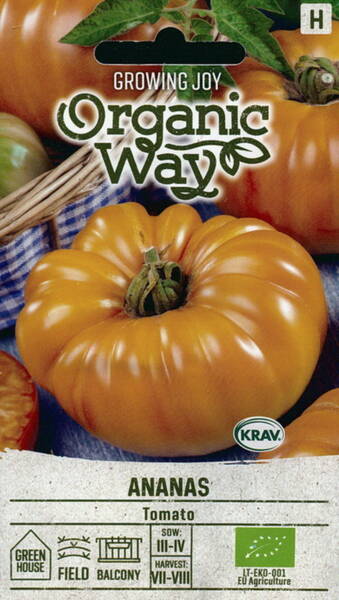Ex Tax: 1.98€
Great taste, high content of sugars and carotene.
The variety is mid-season, the period from germination to ripening is 110-115 days. Plants are tall (1.5-2 m).
The fruits are flat-round, weighing 150-200 g, bright yellow, fleshy. Differs in good productivity (on a plant of 4-5 brushes on 3-4 fruits).


* Mulching the soil surface is one of the agricultural techniques, in which the soil areas near plants are covered with a loose layer of some, preferably organic, material to retain moisture.
Mulch protects the soil from excessive evaporation, eliminates sharp fluctuations in soil temperature: in summer, the soil heats up less, and moist and cool conditions at the roots of plants are more favorable for their growth. In winter, the soil retains heat better, its freezing is reduced.
All mulching substances suppress the growth of weeds, some even completely, and prevent new seeds from entering the soil.
Organic mulch has a number of additional advantages - the soil structure improves, plants are provided with nutrients, and as a result, the root system develops well. A crust does not form under the mulch layer.
Mulch protects plants from erosion by surface water runoff and reduces splashing, which has a positive effect on the development of fruits and berries, for example, strawberries.
Covering the soil inhibits the growth and development of some pests and diseases, in particular, it reduces the number of nematodes, mulch from tomato leaves and stems repels cabbage butterflies, and wood sawdust and shavings repel slugs.
From an aesthetic point of view, plants look more attractive and neat against the background of mulch.
To preserve more winter precipitation in the soil, as soon as the top layer dries, it is loosened to a depth of 5-8 cm and immediately mulched with a layer of 6-10 cm.
If the soil is still damp, it is better not to rush with mulching, as this can lead to soil compaction. The most favorable time for this event is the end of spring, when the soil is well warmed up:
you need to remove weeds, remove trash, dry leaves and water if the surface is dry (do not apply mulch to dry soil, as this slows down the flow of rainwater to the roots of plants), apply and lightly dig in fertilizer, and then mulch.
Mulch is distributed around the plants in a layer of 5-8 cm. If dense material such as bark or sawdust is used as mulch, a 5 cm layer is poured, when using lighter material, such as leaves or pine needles, a layer of about 7-8 cm is made. Bushes are mulched within a radius of 40-50 cm, medium-sized trees - 70-80 cm.
The mulch layer should not reach the trunks or stems of plants so that they do not rot. For the same reasons, you should not compact the material around the roots. In summer it is not touched, and in autumn it can be buried or left until spring, however, plants that were covered with mulch for the winter often suffer from late frosts, so it is better to remove it in the spring to give the soil a chance to warm up. But if the soil under the mulch layer does not freeze in winter, then in early spring it is loose and easy to process.
Re-mulching should be done on average once every 2-3 years.













